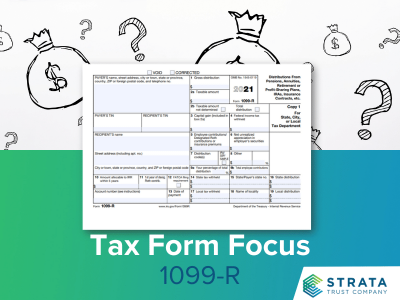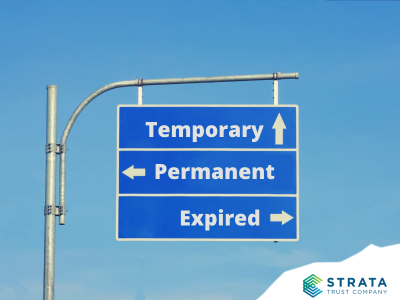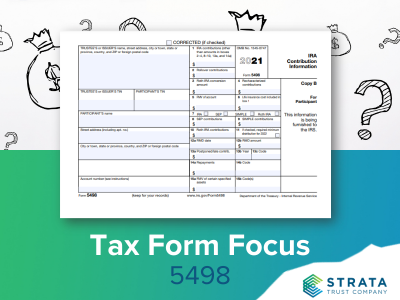If you want to move money from one IRA to another IRA, a “transfer” is the easiest method for moving the assets. An IRA-to-IRA “rollover” can also be used to move money between IRAs, but a rollover may trigger taxation if you do not re-deposit the full distribution amount into an IRA within 60 days. It’s important to understand the differences between these two IRA transactions so you can preserve as much of your savings as possible while moving your money to the IRA custodian you choose. Here are nine key considerations to keep in mind when moving IRA assets.
 No taxation
No taxation
A transfer is a nontaxable transaction so long as you move money or assets directly between two IRAs of the same type. You can transfer money from a Traditional IRA to a Traditional IRA, a Roth IRA to a Roth IRA, and a SIMPLE IRA to a SIMPLE IRA. (You can also transfer assets from a SIMPLE IRA to a Traditional IRA after you meet a two-year waiting period starting with the first contribution to the SIMPLE IRA.)
 No temptation to spend
No temptation to spend
Because you cannot access the assets in a transfer, there is no temptation to spend any of the assets and the financial institutions are responsible for moving and safekeeping the assets. If your IRA custodian generates a check, ACH or wire for an external transfer, the IRA assets go directly from one financial institution to the other financial institution. If a check is written, you may physically take the check to the other financial institution, but the check must be made payable to the receiving institution for the benefit of the IRA.
 No tax withholding
No tax withholding
Your IRA custodian will not withhold any prepayment of income tax from the money or assets you transfer out of one IRA and into another because there is no “distribution” taking place. This may be beneficial when you want to move an investment without liquidating it first.
 No government reporting
No government reporting
You do not have to report a transfer of IRA assets to the IRS on your tax return or anywhere else. There is no IRS Form 1099-R or 5498 reporting from IRA custodians for transfers.
 Flexibility in amount and timing
Flexibility in amount and timing
You can transfer your entire IRA balance or just a portion of it, and you can transfer cash or property so long as the receiving financial institution agrees to custody the alternative investment. You can conduct as many transfers in a tax year as your IRA custodians allow. You do not have a one transaction-per-12 months restriction or 60-day re-deposit deadline as you do for rollovers.
 Accomplish investment objectives
Accomplish investment objectives
IRA owners use transfers for a variety of reasons, including to
- Move money from multiple IRAs into one IRA in the same year to increase purchasing power
- from that IRA,
- Move money into a self-directed IRA to cover investment expenses, or
- Move IRA assets to an IRA custodian that specializes in handling alternative investments.
 Transfer RMDs
Transfer RMDs
Because IRA assets are deemed to stay within an IRA during a transfer, you can transfer assets that include RMD amounts so long as you eventually distribute the RMD by the required date. You do not have to distribute your RMD before making a transfer.
 Divide IRA assets after a divorce
Divide IRA assets after a divorce
When all or a portion of an IRA owned by one spouse is awarded to the other spouse as part of the property division in a divorce, these assets can be moved via a transfer to an IRA established for the receiving spouse. The transfer will not be treated as a taxable distribution to either spouse, and the former spouse will be treated as the owner of his or her own IRA.
 Move inherited IRA assets
Move inherited IRA assets
If you inherit a Traditional IRA from anyone other than your deceased spouse, you can’t roll over any amounts into or out of the inherited IRA. You can make a trustee-to-trustee transfer so long as the receiving IRA is established and titled as an inherited IRA.
DO YOU WANT TO TRANSFER TO A STRATA TRUST IRA?
If you want to transfer IRA assets to STRATA Trust, and you’re an existing account holder, use our IRA Transfer Request Form. This form is available with the ServiceNOW technology, you can easily complete sign and electronically submit in just a few seconds. If you don’t have a STRATA Trust IRA, you’ll need to open an IRA using our Traditional – Roth – SEP IRA Application.
Remember when transferring assets in-kind, the assets must be something that STRATA Trust will accept and hold. If the asset to be transferred is property (directly-owned) or a private equity or private debt investment, please refer to the appropriate Investment Checklist and Form for that investment type. Direct transfers of publicly traded stocks, bonds and mutual funds require a brokerage account with any clearing firm or discount brokerage.
Additional information about transferring IRA assets to a STRATA TRUST IRA can be found here.










